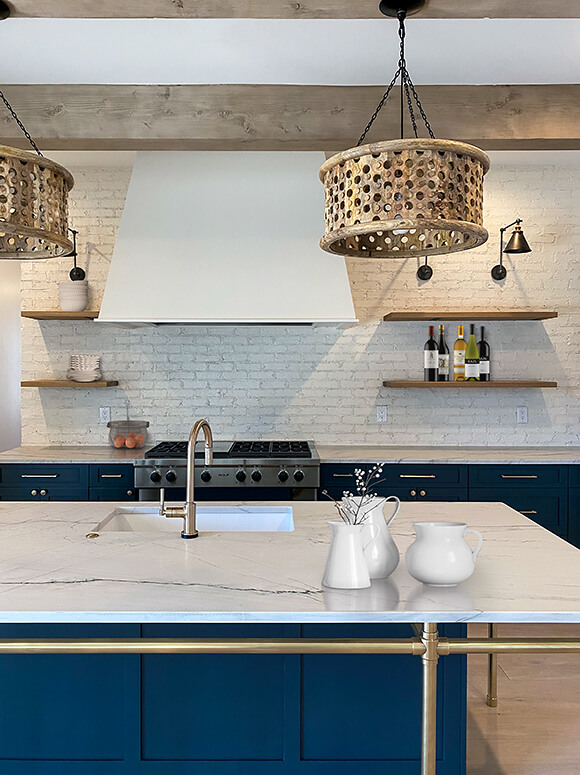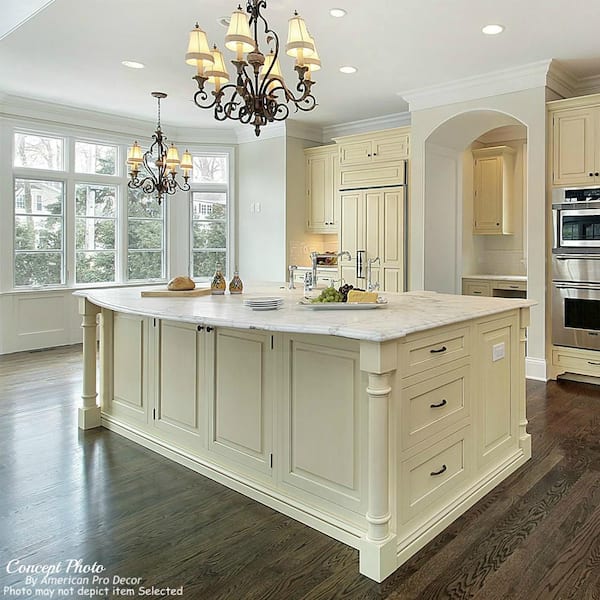Vital Aspects to Consider When Choosing Legs For Kitchen Island
Picking the suitable legs for a cooking area island includes a mindful assessment of numerous factors that can substantially influence both performance and visual appeal. As we check out these elements, it ends up being clear that each choice can have far-reaching effects for the overall kitchen area experience.
Product Options
When selecting legs for a kitchen area island, recognizing the various material choices is essential for achieving both visual allure and architectural integrity (Legs For Kitchen Island). The option of product dramatically affects not only the sturdiness of the island yet additionally its overall design and functionality
Metal legs, often made from stainless steel or functioned iron, contribute a industrial and contemporary feel while making sure toughness and security. These materials are resistant to put on and can sustain considerable weight, making them optimal for larger islands.
Another alternative is crafted materials, like MDF or plywood, which can be more cost-efficient while still supplying a series of surfaces. However, they might not supply the same degree of stability as solid timber or metal. Last but not least, materials such as acrylic or glass can create a modern look, though they might require added support to ensure security.
Ultimately, the option of material for kitchen area island legs should line up with the desired capability and the overall style of the kitchen.
Design and Layout

When taking into consideration style, the form and finish of the legs are important. Tapered legs can give a sense of lightness and elegance, while thicker, a lot more durable legs can communicate toughness and stability. Furthermore, the coating-- be it painted, tarnished, or all-natural-- ought to enhance the cabinetry and counter top products to create a unified look.
Additionally, the design of the legs can likewise show individual preference. Customized or ornamental legs, such as those including intricate carvings or special geometric forms, can function as centerpieces, adding personality and individuality to the cooking area. Ultimately, the best option will certainly not just improve capability but also elevate the aesthetic charm, making the kitchen area island a standout function of the home.
Elevation Factors To Consider
Selecting the suitable elevation for cooking area island legs is vital, as it directly impacts both capability and convenience. The conventional elevation for a kitchen island normally varies from 36 to 42 inches, aligning with typical countertop heights.

It is also essential to make up individuals' elevations and preferences. Customizing the elevation can ensure a comfy experience for all member of the family, making the kitchen island an extra practical and delightful area.
Weight Assistance
Guaranteeing ample weight support for cooking websites area island legs is important for both safety and security and functionality. The kitchen area island often offers numerous purposes, consisting of food preparation, dining, and added storage, requiring a durable assistance structure. When choosing legs, it is crucial to think about the total weight capacity required based on the island's planned usage and the materials that will be put on it.
The selection of product for the legs plays a significant role in their weight-bearing abilities. Strong timber, steel, and sturdy composites normally give superior stamina compared to lighter products. In addition, the layout of the legs-- whether they are right, tapered, or have a pedestal kind-- can affect their capability to disperse weight effectively across the framework.
Constantly seek advice from the maker's specifications regarding lots limitations to guarantee that the legs can maintain the desired weight without jeopardizing safety. In recap, choosing kitchen island legs with ample weight support browse around these guys is essential for developing a risk-free and functional cooking space.
Installment and Maintenance
Correct setup and upkeep of kitchen area island legs are crucial for making certain durability and security. To begin, it is important to comply with the manufacturer's guidelines throughout installation. This commonly involves protecting the legs to the space station utilizing ideal fasteners, making sure that the legs are degree and lined up. Making use of a level tool can assist prevent wobbling and improve the total aesthetic charm of the cooking area island.
Once set up, routine upkeep is needed to maintain the integrity and appearance of the legs - Legs For Kitchen Island. For wooden legs, periodic cleaning with a damp cloth and application of appropriate wood polish can stop wetness damages and preserve their surface. Steel legs might need a gentle cleaning service to remove oil and crud, adhered to by a completely dry fabric to stop corrosion development
Additionally, evaluate the legs on a regular basis for indications of wear or damages, such as fractures or loosened joints. Tightening screws or screws as needed can also extend the life expectancy of the legs. By adhering to these setup and maintenance practices, house owners can make certain that their kitchen area island stays durable and visually appealing for years to find.
Verdict

Aesthetic coherence is vital in picking the design and design of legs for a kitchen area island, as these components greatly influence the general atmosphere of the area. Conical legs can give a sense of lightness and beauty, Bonuses while thicker, a lot more durable legs can share toughness and security.Picking the appropriate height for kitchen island legs is essential, as it directly impacts both performance and comfort. In summary, choosing kitchen area island legs with sufficient weight support is necessary for developing a useful and secure cooking area.
In final thought, selecting legs for a kitchen island necessitates careful factor to consider of numerous aspects, consisting of material options, design, elevation, weight support, and setup.